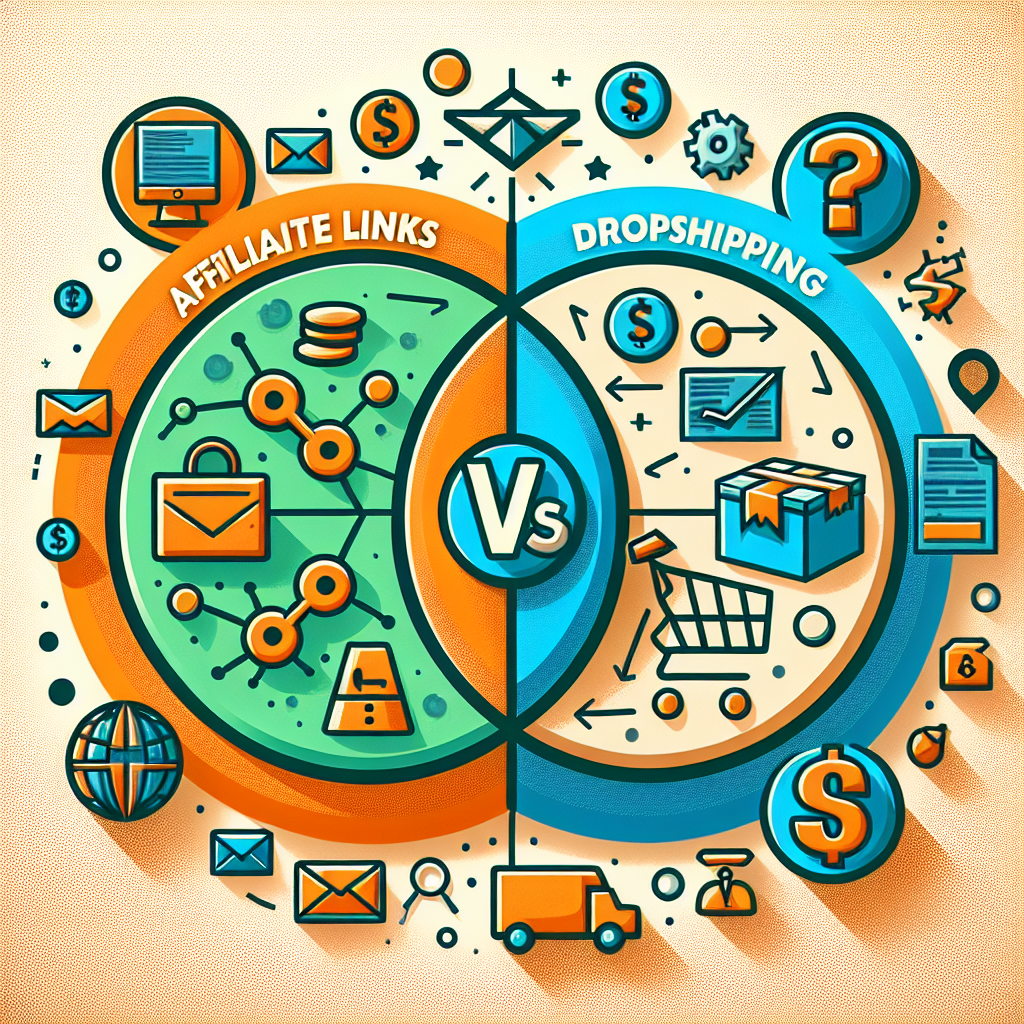In the digital age, many entrepreneurs are exploring online business models that allow for low overhead costs, minimal risk, and the potential for significant profit. Among the most popular options are affiliate marketing and dropshipping. This article provides a detailed comparison of these two business models, helping you determine which one might be the best fit for your entrepreneurial ambitions.
Understanding Affiliate Marketing
What is Affiliate Marketing?
Affiliate marketing involves promoting other companies’ products or services and earning a commission for each sale made through your referral. Affiliates use unique tracking links to connect potential buyers with the seller, ensuring that any resulting sales are attributed to the affiliate.
How Affiliate Marketing Works
- Choose a Niche: Affiliates typically focus on a specific niche or market where they feel comfortable promoting products.
- Join Affiliate Programs: Affiliates sign up for affiliate programs, offered by various companies ranging from Amazon to niche retailers.
- Promote Products: They create content—such as blog posts, social media posts, or YouTube videos—that includes their affiliate links.
- Earn Commissions: When a user clicks on their link and makes a purchase, the affiliate earns a predefined commission.
Pros of Affiliate Marketing
- Low Startup Costs: Minimal investment is needed as you do not need to maintain inventory.
- Flexibility: Affiliates can work from anywhere and have flexible schedules.
- Various Income Streams: Affiliates can join multiple programs and promote various products, thus diversifying their income sources.
Cons of Affiliate Marketing
- Dependence on Third-Party Companies: Affiliates are subject to the rules and policies of the companies they promote.
- Competitive Market: Many affiliates are promoting similar products, which can drive down commissions and increase competition for visibility.
- Income Fluctuation: Earnings can be unpredictable, with income dependent on traffic and sales conversions.
Understanding Dropshipping
What is Dropshipping?
Dropshipping is a retail fulfillment method where a store doesn’t keep the products it sells in stock. Instead, when a store sells a product, it purchases the item from a third party and has it shipped directly to the customer. As a result, the seller does not handle the product directly.
How Dropshipping Works
- Select a Niche and Products: Retailers identify a specific market and select products to sell through their online store.
- Choose a Supplier: Retailers team up with suppliers who handle inventory and shipping.
- Set Up an Online Store: Using platforms like Shopify, WooCommerce, or BigCommerce, retailers create an online presence.
- Market Products: Retailers advertise their products via various marketing strategies such as social media, content marketing, or email marketing.
- Process Orders: When a customer makes a purchase, the retailer forwards the order to the supplier, who then fulfills and ships the order directly to the customer.
Pros of Dropshipping
- No Inventory Management: Retailers don’t need to invest in stock, reducing the risk of unsold inventory.
- Wide Product Selection: Retailers can offer a diverse range of products without upfront costs.
- Ease of Scaling: As sales increase, retailers can focus on marketing and customer service rather than logistics.
Cons of Dropshipping
- Lower Profit Margins: Retailers often have to compete on price because they do not control production costs.
- Supplier Risks: Issues such as stock shortages or shipping delays from suppliers can impact the retailer’s reputation.
- Customer Service Challenges: As retailers don’t handle the physical products, resolving customer service issues can be tricky.
Key Differences Between Affiliate Marketing and Dropshipping
1. Business Model Structure
- Affiliate Marketing: Primarily revolves around promoting and earning a commission on sales, without any inventory or order fulfillment responsibilities.
- Dropshipping: Involves setting up and managing an online store while relying on suppliers for inventory and fulfillment.
2. Revenue Potential
- Affiliate Marketing: Commissions can vary widely by program and typically range from 5% to 50% of the sale price.
- Dropshipping: Profit margins are generally lower (10% to 30%) due to competition, but the retailer has more control over pricing.
3. Workload and Responsibilities
- Affiliate Marketing: The primary focus is on content creation and traffic generation, with less responsibility for customer service and order fulfillment.
- Dropshipping: Retailers must engage in customer service, product management, and marketing, making it more labor-intensive.
4. Inventory and Supply Chain
- Affiliate Marketing: No involvement in inventory management or supply chain logistics.
- Dropshipping: Retailers must manage relationships with suppliers and deal with the complexities of inventory levels and shipping processes.
Which Business Model is Right for You?
The choice between affiliate marketing and dropshipping largely depends on your skills, interests, and resources. Here are some considerations to help you decide:
Choose Affiliate Marketing If:
- You prefer content creation and digital marketing.
- You want a lower barrier to entry with little to no initial investment.
- You desire a flexible work schedule without direct involvement in sales fulfillment.
Choose Dropshipping If:
- You are interested in e-commerce and want to build and manage an online store.
- You are willing to take on customer service responsibilities.
- You want potentially higher income by diversifying product offerings.
Conclusion
Both affiliate marketing and dropshipping are viable options for those looking to start an online business. Each has its own set of pros and cons, and understanding these can help you align your choice with your business goals and personal strengths. By evaluating your interests, skills, and resources, you can select the model that will help you succeed in the competitive online marketplace.
If you’re intrigued by the concept of online entrepreneurship, you might be interested in learning more about [e-commerce platforms](https://en.wikipedia.org/wiki/E-commerce) and how they facilitate the growth of digital businesses. For those delving into affiliate marketing, understanding the nuances of [commission structures](https://en.wikipedia.org/wiki/Marketing_management#Commission) can provide valuable insights into how you can maximise your earnings. Similarly, if dropshipping piques your interest, exploring [supply chain management](https://en.wikipedia.org/wiki/Supply_chain_management) can offer a deeper perspective on how to efficiently run your business operations. Both affiliate marketing and dropshipping have strong ties to [digital marketing](https://en.wikipedia.org/wiki/Digital_marketing) strategies, which are essential in driving traffic and generating sales. Each link takes you to a comprehensive Wikipedia article that expands on these topics, helping you make an informed decision about which path to pursue in the vast online marketplace.





